There is an opinion on social networks that the Russian state flag was invented by Peter I, changing the order of stripes on the Dutch flag. We decided to check how true this is.
According to the most common version of the borrowing of the flag, Peter I saw the flag of the Netherlands and decided to make it Russian while he was studying shipping in Amsterdam. About this, for example, writes community “Russia - my history / Stavropol”. This version is popular in Ukrainian media. On air TV channel "Kyiv" journalist Valery Kalnysh said that Peter I stole the flag from the Dutch and this symbol has nothing to do with Russia. This was then repeated by the publication “Reviewer" and website "Anticorrosive" You can also find posts about the “theft” of the flag from the Dutch on Russian social networks: “VKontakte" And LiveJournal.
Before Russia had a fleet, there was no vital need for a flag. The first mention dates back to 1667, when, by order of Tsar Alexei Mikhailovich, they began to build the ship “Eagle”. The captain of the future ship, the Dutchman David Butler, while listing the necessary materials, did not forget about symbolism: “42 arshin kindyaku on a long narrow banner: and those flowers are all kindyaks, as the sovereign will indicate: only on ships it happens, whose state the ship is, that state there is also a banner.” Kindyaks are fabric, and the order was preliminary in nature: Alexei Mikhailovich himself had to choose the colors. From further documents it becomes clear that the choice has been made: in April, “three hundred and ten arshins of kindyaks and one hundred and fifty arshins” were requested from the Siberian order taffeta lined [red], white and azure [blue] for shipbuilding for banners and cowbirds [pennants].” Thus, in 1667 the color scheme of the future flag was determined.
It is not known exactly how the colors on the flag were distributed. The most plausible version was put forward in 1911 by Lieutenant Commander Pyotr Belavenets, who compiled for the Ministry of Justice detailed information about the history of the Russian flag. Belavenets believed that the first flag sewn for the “Eagle” was a cloth divided by a blue cross into four quarters (two quarters white, two red).
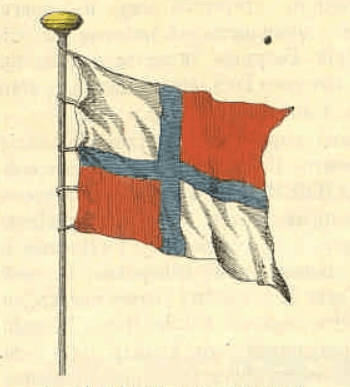
He gave two arguments: firstly, most of the Streltsy regimental banners looked exactly like this; secondly, in 1700 on engraving “The capture of Azov. 1696” by the Dutch artist Adrian Schonebeek, the ship flags of the Russian fleet are depicted with crosses.
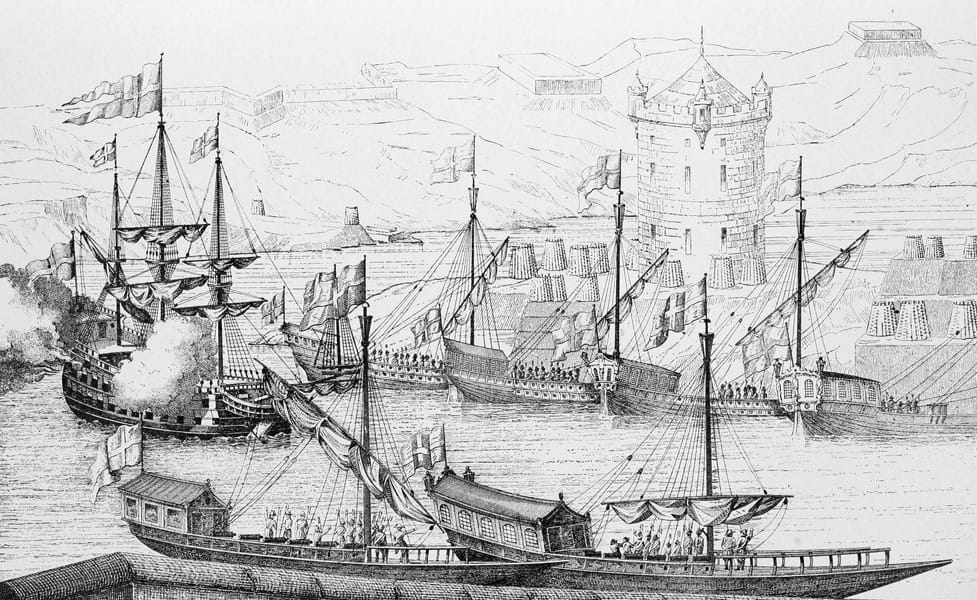
However, in other engravings there are other options. For example, the book of the former sailing master "Eagle" Jan Struys about his journey to Russia is illustrated pattern, on which three different stripes are clearly visible, with the white one located in the middle, like on the Dutch flag.
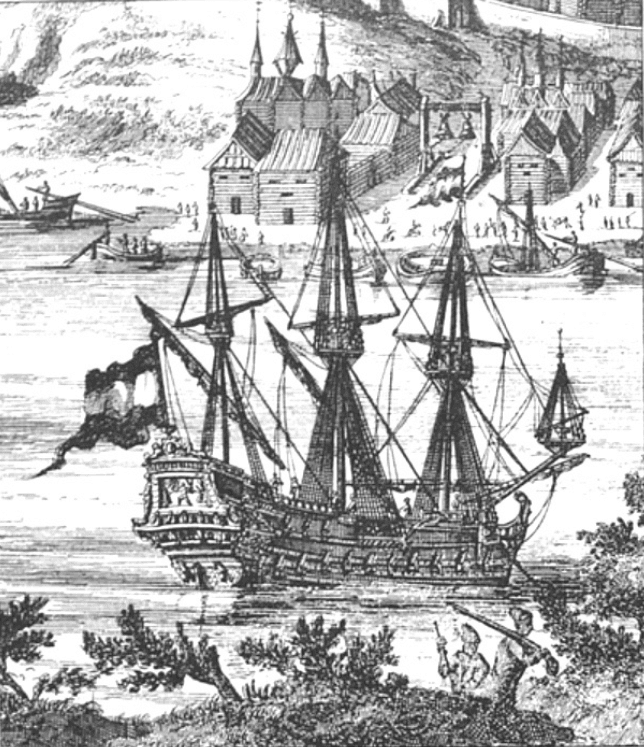
What is confusing about the first engraving (with crosses) is that the artist knew about the capture of Azov only from stories, but he himself was not present there. In the second case, Belavenets suggests that the former sailing master simply gave a description of the first flag that came to his mind, that is, the Dutch one.
In any case, there are indisputable documents proving that the white-blue-red flag appeared even before Peter I, and even more so before his trip to Holland in 1697. However, there is no exact evidence that it was a three-stripe flag. In 1695, the Dutchman Karl Allyard wrote “The Book of Flags,” where for the first time, along with long-known flags, Russian symbols also appeared. The second edition of this book, published in Amsterdam in 1705, was translated into Russian in 1709. This book contains both options - both with a cross and with three stripes:
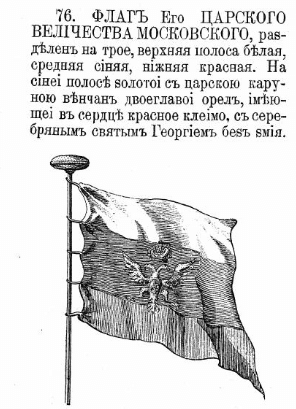
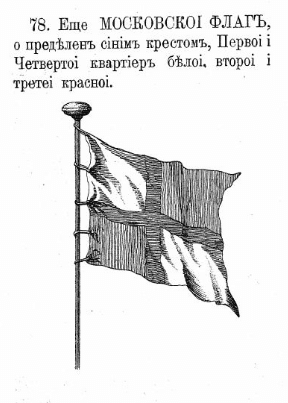
This proves that the existence of the flag of pre-Petrine times was recorded in another source.
The three-stripe flag has definitely existed since 1693, that is, again, before Peter I’s trip to Holland. It was raised above the yacht “St. Peter” and until the beginning of the 20th century was kept in the Cathedral of Arkhangelsk. Now the flag located at the Central Naval Museum in St. Petersburg - the same captain-lieutenant Belavenets brought him there.
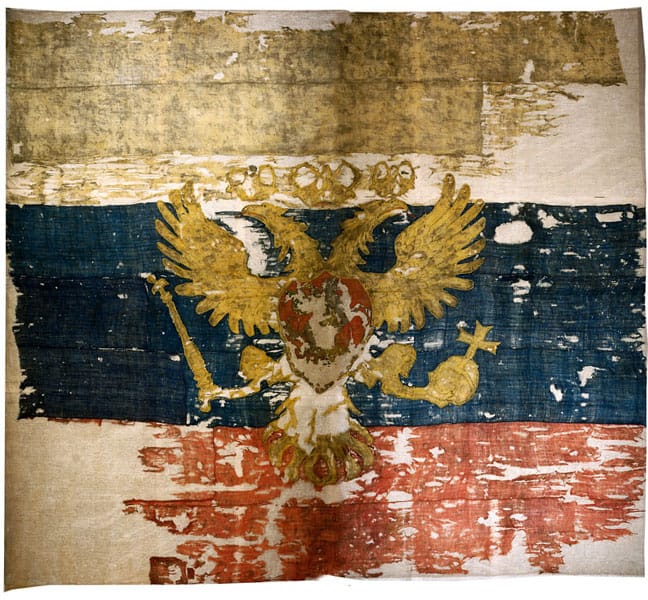
The flag is a panel of white, blue and red horizontal stripes, on top of which a golden double-headed eagle is sewn.
Thus, the colors and even the arrangement of the stripes were adopted even before the king’s trip to Holland. However, this does not yet answer the question of whether the Dutch flag influenced the emergence of the Russian one. The crew of the ship "Eagle" consisted mainly of Dutchmen. The captain of the "Eagle" was also a citizen of this state, asking Alexei Mikhailovich to decide on the colors of the flag. The artists who depicted the Russian flag were also Dutch. Undoubtedly, Peter I was also influenced by Dutch maritime masters. However, the question of borrowing flags from each other for the 18th century sounds a little absurd: for example, England and Genoa, two influential maritime powers, had identical flags (and, most likely, it was the British who borrowed the St. George Cross from the Genoese), and this caused confusion at sea. In the 19th century, and then in the 20th century, some European flags became variations on the theme of the French flag (for example, Italy, Romania, Ireland), others were guided by the Russian tricolor (Bulgaria, Serbia, Montenegro), this happened quite deliberately and they saw nothing wrong with it.
Cover photo: Yuri Kushevsky, 2009, Wikimedia Commons
Mostly not true
Read on topic:
- Is it true that the state symbols of Ukraine are borrowed from other countries?
- Is it true that the Ukrainian military recently burned the Dutch flag, confusing it with the Russian one?
If you find a spelling or grammatical error, please let us know by highlighting the error text and clicking Ctrl+Enter.






